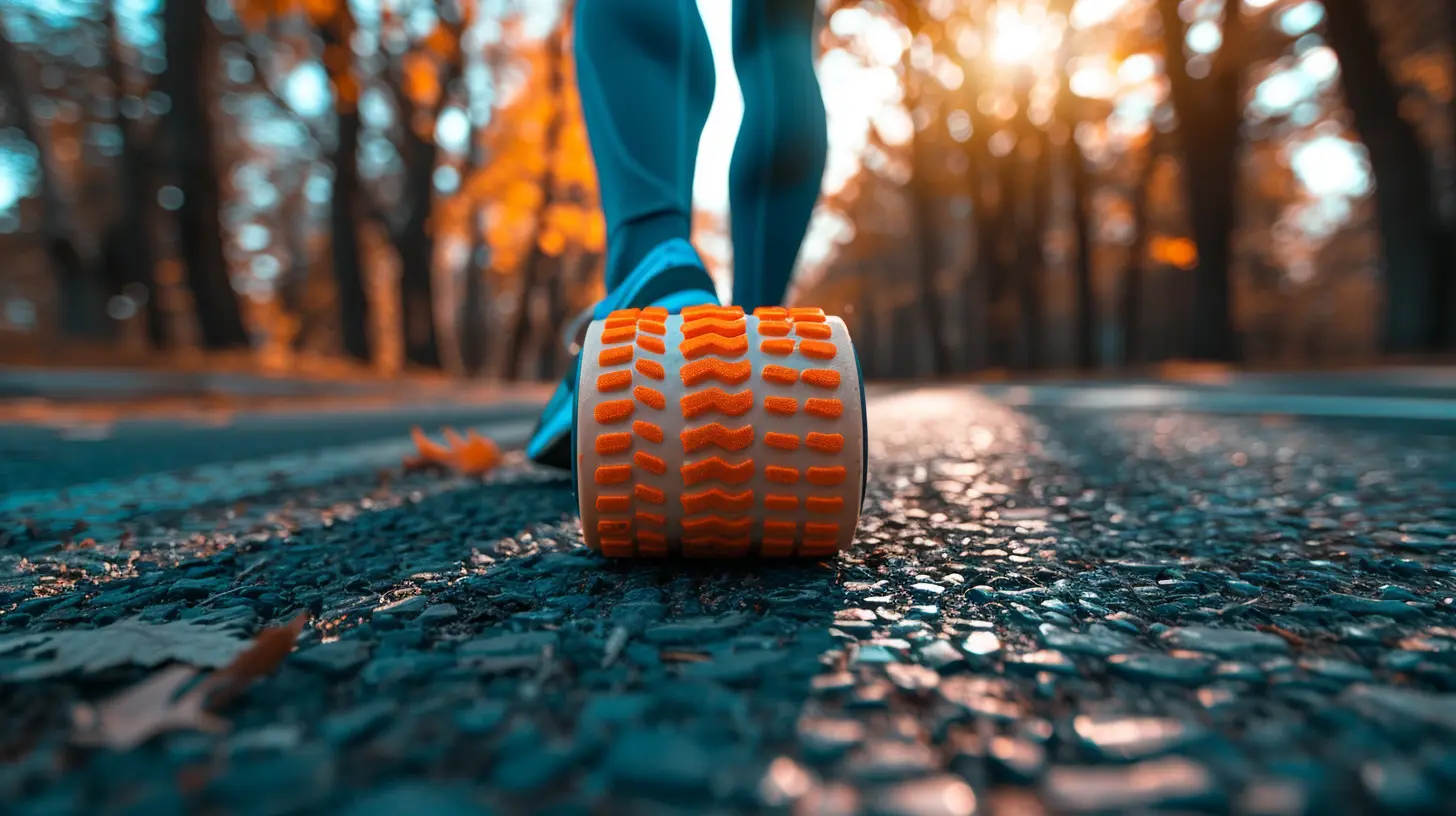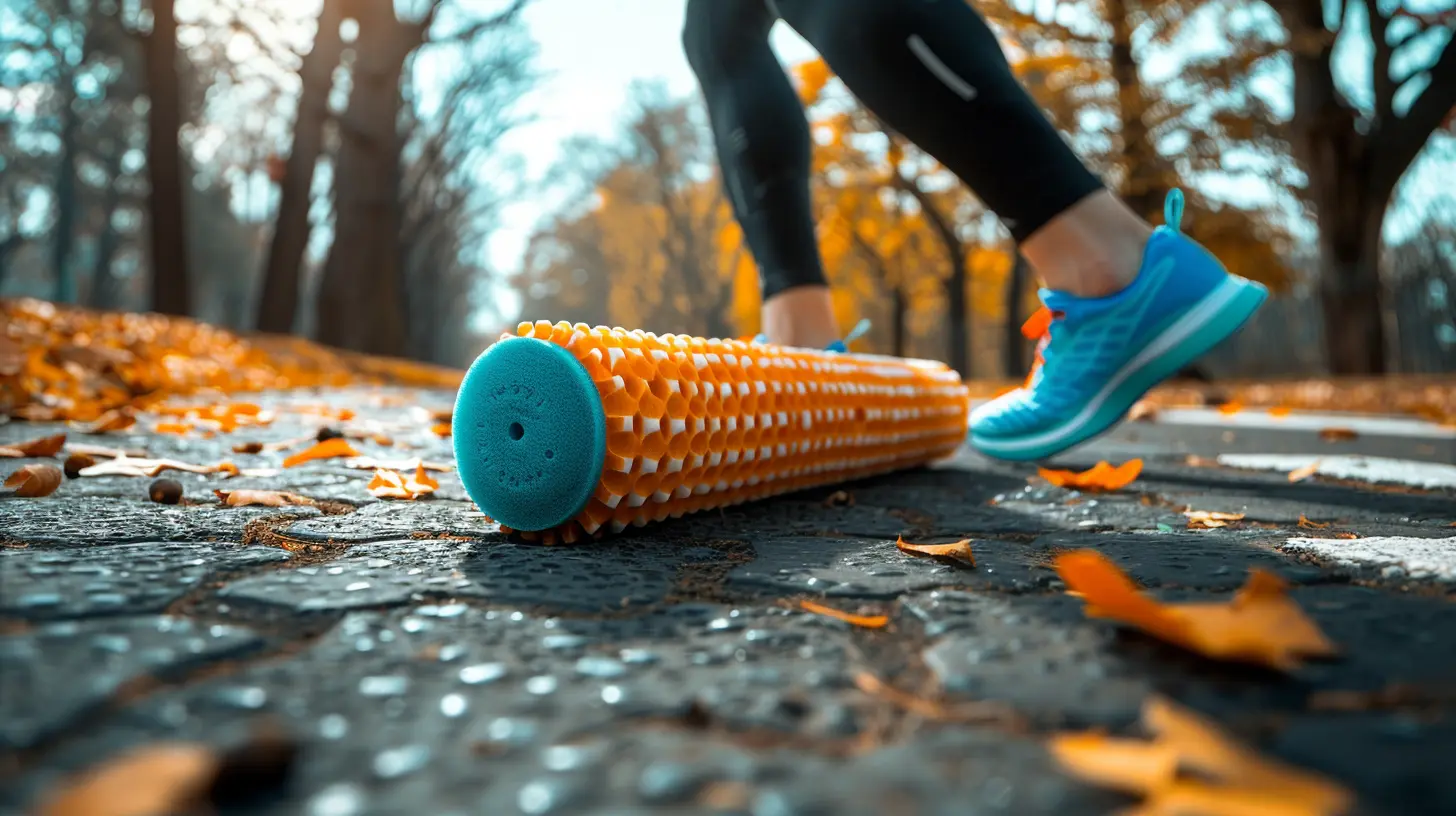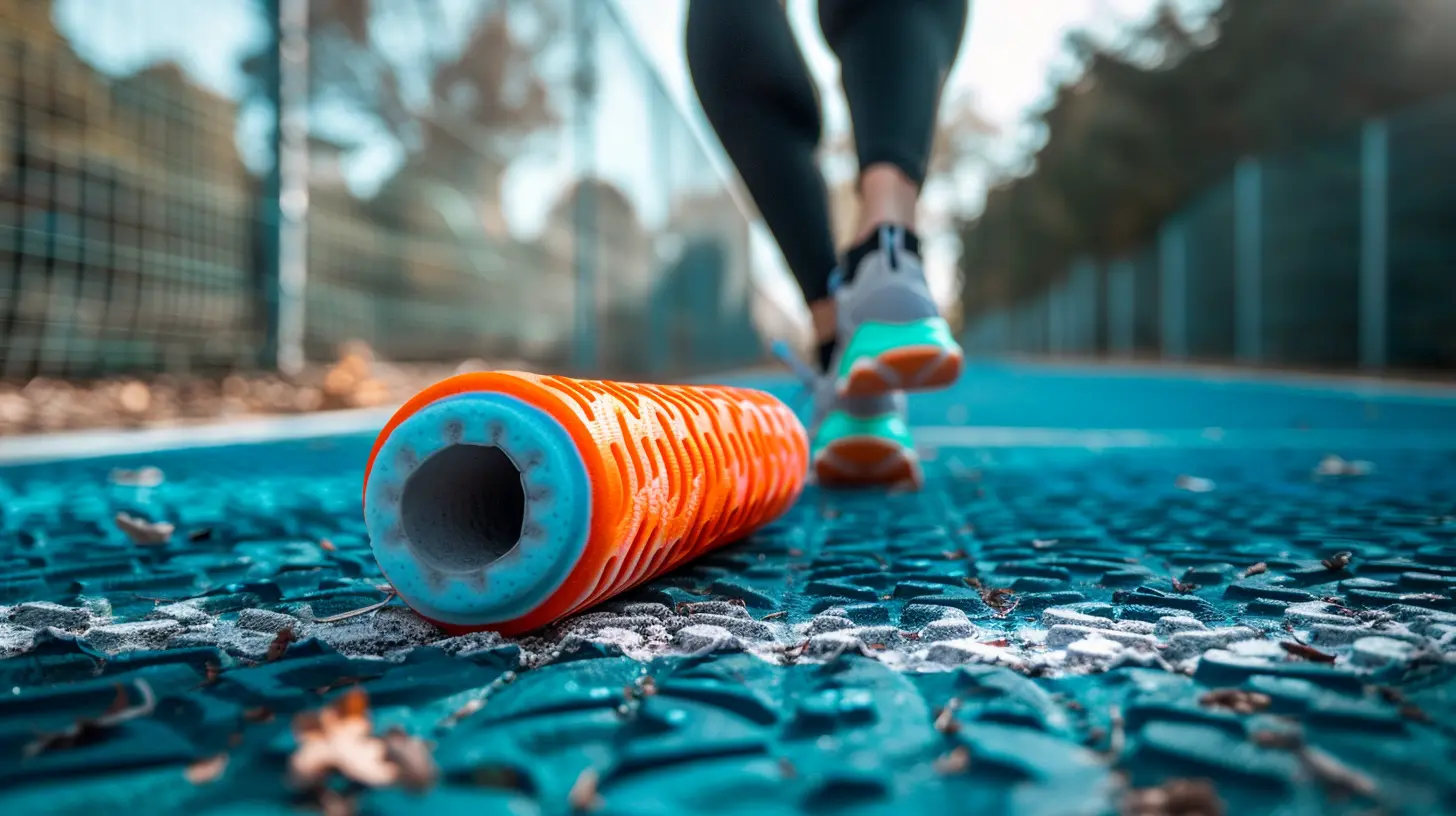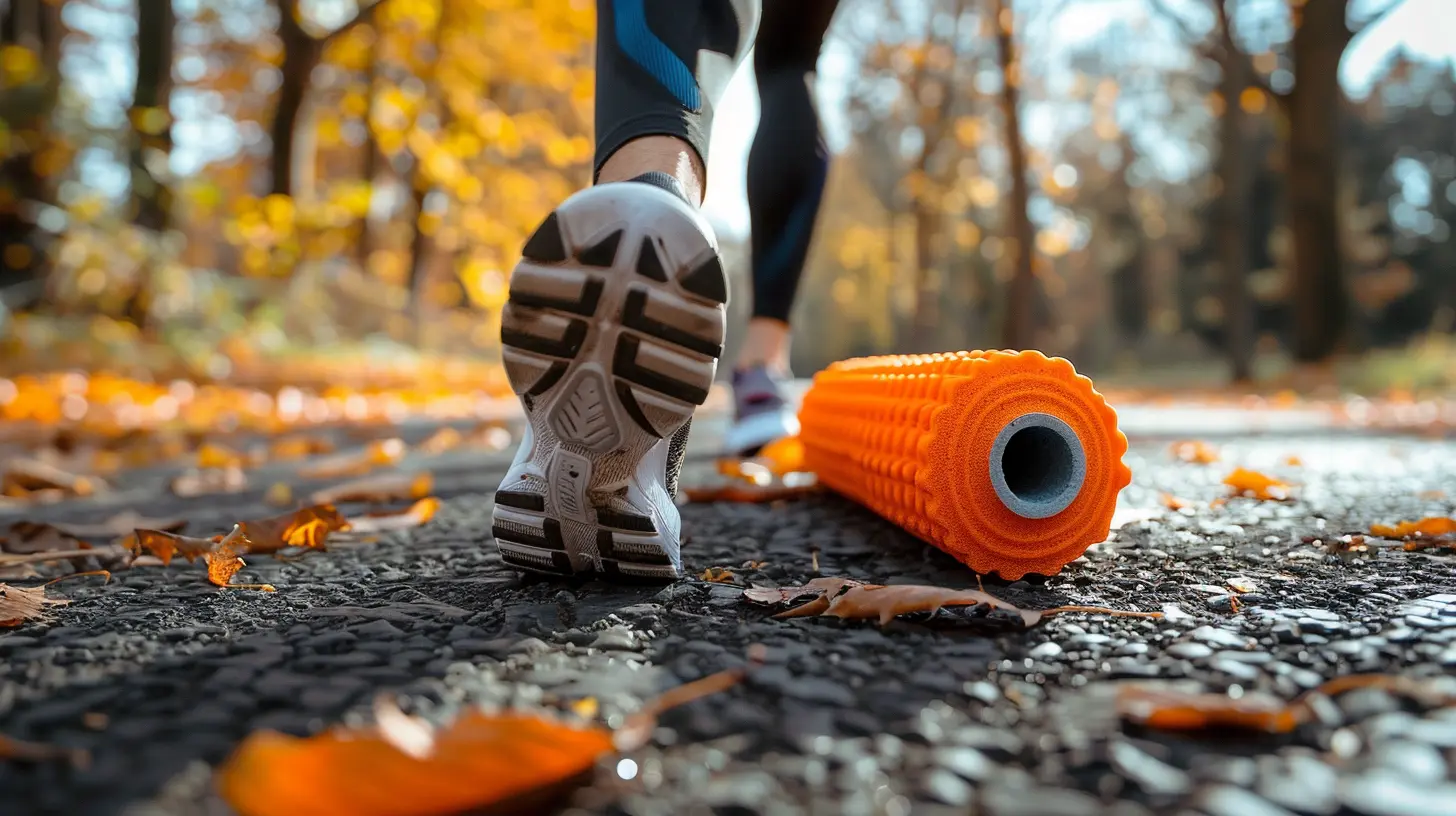Foam Rolling for Runners: Benefits and Techniques
12 June 2025
Running is an exhilarating and rewarding activity, but let’s be real—it’s tough on the body. Whether you’re logging miles on the road, tracking down trails, or training for your next marathon, your muscles take a beating. Soreness, tightness, and even injuries can creep in if you don’t give your body the care it deserves.
So, what’s a simple and effective way to relieve those aches and keep your muscles happy? Enter foam rolling—a game-changer for runners! This self-massage tool can help ease tension, improve flexibility, and enhance recovery, all without breaking the bank.
If you've been neglecting your foam roller (or haven’t even considered using one), it's time to rethink your recovery routine. Let’s dive into the benefits of foam rolling for runners and how to do it the right way. 
Why Should Runners Use a Foam Roller?
Running puts constant stress on your muscles, tendons, and fascia (the connective tissue surrounding muscles). Over time, this can lead to tightness, knots, and even mobility issues. Foam rolling, a type of self-myofascial release (SMR), helps loosen up those tight spots, improve circulation, and reduce post-run soreness.Here are some key benefits of using a foam roller:
1. Reduces Muscle Soreness and Stiffness
Ever feel like your legs are made of lead the day after a long run? That’s delayed onset muscle soreness (DOMS) kicking in. Foam rolling helps by increasing blood flow to fatigued muscles, flushing out toxins, and speeding up recovery so you can hit the pavement again sooner.2. Improves Flexibility and Range of Motion
Tight muscles can throw off your running mechanics, leading to inefficiencies and even injuries. Regular foam rolling keeps your muscles supple and enhances your overall range of motion, making each stride feel easier and more natural.3. Helps Prevent Injuries
Many common running injuries—like IT band syndrome, shin splints, and plantar fasciitis—can stem from muscle imbalances or tight fascia. By using a foam roller regularly, you can release tension in key areas and reduce your risk of overuse injuries.4. Enhances Circulation and Recovery
Proper blood flow is essential for muscle recovery. Foam rolling stimulates circulation, ensuring oxygen and nutrients reach your muscles while aiding in the removal of waste products like lactic acid. This means less stiffness and quicker recovery times.5. Breaks Up Adhesions (Knots) in the Muscles
Ever felt a knot in your muscles—those tight, tender spots that seem impossible to stretch out? Foam rolling applies pressure to those adhesions, helping to break them up and restore normal muscle function. Think of it as your personal deep tissue massage!
Effective Foam Rolling Techniques for Runners
Now that you know why you should foam roll, let’s go over how to do it properly. The key is to move slowly, apply steady pressure, and focus on the main muscle groups involved in running. Spend about 30-60 seconds on each area, breathing deeply to help your muscles relax.1. Calves
Your calves absorb a lot of impact while running, so they’re prone to tightness.How to roll:
- Sit on the floor with your legs extended and place the foam roller under your calves.
- Lift your body slightly and roll slowly from your ankles up to just below your knees.
- If you find a tender spot, pause for a few seconds and gently rock back and forth.
2. Quadriceps (Front of Thighs)
Tight quads can contribute to knee pain—something no runner wants!How to roll:
- Lie face down with the roller positioned under your thighs.
- Use your forearms for support and slowly roll from just above your knees to your hip flexors.
- Pause on any tight spots and hold for a few seconds.
3. Hamstrings (Back of Thighs)
Your hamstrings help with stride power, so keeping them loose is key.How to roll:
- Sit with the foam roller under your thighs, legs extended.
- Support your weight with your hands, lift your hips, and roll from your knees to your glutes.
- Apply extra pressure by crossing one leg over the other.
4. IT Band (Outer Thigh)
The IT band can get tight and inflamed, often leading to knee pain.How to roll:
- Lie on your side with the roller underneath your outer thigh.
- Support yourself with your forearm and slowly roll from just above the knee to your hip.
- This one might hurt a bit—it’s normal, but don’t overdo it!
5. Glutes (Butt Muscles)
Tight glutes can mess with your stride and contribute to lower back pain.How to roll:
- Sit on the foam roller with one ankle crossed over the opposite knee.
- Lean slightly toward the side of the crossed leg and roll slowly back and forth.
- Focus on any tight spots for extra relief.
6. Lower Back (Optional – Proceed with Caution!)
If your lower back is tight, foam rolling can help, but avoid direct pressure on the spine.How to roll:
- Lie on the roller with it placed just above your glutes.
- Cross your arms over your chest and gently roll from the lower back up to your mid-back.
- Keep your core engaged to avoid excessive arching. 
Common Foam Rolling Mistakes (And How to Avoid Them)
Foam rolling is great, but only if you do it correctly! Here are some common mistakes runners make and how to fix them.❌ Rolling Too Fast
Rushing through foam rolling won’t give your muscles enough time to release tension. Go slow and steady for the best results.❌ Holding Your Breath
If you tense up, your muscles won’t relax! Take deep, slow breaths to help your body loosen up.❌ Rolling Directly on Injuries
Foam rolling isn’t a cure-all. If you have an acute injury or sharp pain, avoid rolling directly on the painful area and consult a professional.❌ Neglecting Certain Muscles
Many runners focus only on their quads and calves but forget about areas like the glutes and IT band. Foam roll your entire lower body for balanced muscle relief.
When and How Often Should Runners Foam Roll?
The best time to foam roll? Both before and after your runs!- Before a run: Helps loosen up tight muscles and improve mobility. Spend 5-10 minutes on key areas.
- After a run: Aids in muscle recovery and reduces stiffness. Roll for 10-15 minutes, focusing on sore spots.
- On rest days: Foam rolling regularly—even when you’re not running—can keep muscle tightness at bay.
Aim for at least 3-4 foam rolling sessions per week to stay limber and injury-free.
Final Thoughts
Foam rolling might sting a little at first (no pain, no gain, right?), but the benefits are well worth it. By adding this simple practice to your routine, you’ll run smoother, recover faster, and reduce your risk of injuries.So grab that foam roller, roll out your muscles, and keep those legs feeling fresh. Your body—and your future miles—will thank you!
all images in this post were generated using AI tools
Category:
Running TipsAuthor:

Holly Ellison
Discussion
rate this article
2 comments
Henrietta McClintock
Thank you for this informative article! Foam rolling has truly transformed my running routine, enhancing recovery and reducing soreness. I appreciate the helpful techniques shared.
June 17, 2025 at 3:08 AM

Holly Ellison
Thank you for your kind words! I'm glad to hear that foam rolling has positively impacted your running routine. Happy running!
Zayden Rocha
Essential for recovery and injury prevention!
June 12, 2025 at 3:49 AM

Holly Ellison
Thank you! Foam rolling is indeed crucial for enhancing recovery and preventing injuries in runners.


